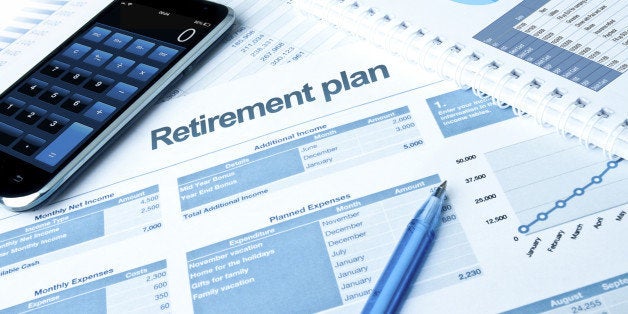
Workplace retirement savings plans are one of the most effective tools workers can use to better prepare themselves for retirement. Taking the time to maximize your savings through your plan today can go a long way toward saving for the future. Consider taking the following steps to make the most out of your workplace plan:
Make sure you are enrolled
According to the Voya Retire Ready Index™, 83% of American workers currently contribute some of their salaries to their workplace retirement plans. If you are not currently participating and your employer offers a plan, get started by enrolling. If your employer does not offer a plan or you are self-employed, consider alternative savings options such as opening a self-directed IRA, which can provide you with a reliable, effective savings tool in lieu of an employer-sponsored plan.
Don't leave money on the table
A simple way for most people to find some extra money is to take advantage of their employer's savings plan matching program, if one is available. Once you are enrolled in your employer's plan, do all you can to ensure you are contributing at least enough to receive what your employer will match. For example, if your employer offers to match up to 5% of your 401(k) contribution, contribute at least 5% with each paycheck. If not, you will be missing out on an easy way to build your savings and earn this extra "free money."
Set clear savings goals
You will also want to do some research on other options that are available to further grow your savings. By considering your savings in terms of retirement income, you are able to put your goals in perspective much more effectively than just building toward a lump sum. Use an online tool such as Voya's myOrangeMoney online retirement experience that takes employer-sponsored plans into account; or consult with a financial advisor to create a savings plan that could help build financial confidence once you have retired.
While a workplace-sponsored plan can contribute significantly toward your retirement savings, you should view it as only one part of your future retirement income. As retirement nears, your financial strategy should be taking root too. This is the time to start thinking seriously about how you will make your money go the distance. Remember, you can also make additional "catch-up" contributions into your 401(k) account once you turn 50 years old.
Health care costs and Social Security benefits are also considerable savings to take into account outside of your employer's plan. Research from the Voya Retire Ready Index study shows more than six-in-10 (61%) of workers were significantly concerned about their inability to pay for health care expenses in retirement. A majority (58%) were also significantly concerned that they would end up with fewer Social Security benefits than expected -- yet almost half (45%) planned to rely on Social Security as a major source of their income in retirement. This is a good time to factor these items into your plan and understand if any gaps need to be addressed. Evaluating your full portfolio now could help you avoid any surprises when your retirement years finally arrive.
Put your plan to work
Be sure to monitor your accounts to ensure you are taking full advantage of your plan in a way that is making your money work for you. As earning potential increases, you should consider putting more of your paycheck into an employer's 401(k) plan. While everyone's situation is different, a good number to aim for is 10 - 15%, if possible.
Try to make an effort to be actively involved in your retirement plan to take advantage of any options that will help you reach your savings goals. As you grow older and start to partake in huge lifetime events such as getting married, buying a house or starting a family, you will need to be even more deliberate in saving for the future. Set up a budget to track expenses and spending and use online resources and tools to help create a comprehensive plan.
Seek professional financial advice
Even in your earliest retirement planning stages, working with an advisor can help you determine how aggressive or conservative you would like to be with your plan investments. Generally a balanced, well thought-out portfolio can go a long way toward helping you save and build toward a financially confident retirement.
While getting professional financial advice is recommended at any stage of life, it may be even more relevant as you near retirement. A trusted financial professional can help with more complicated planning, tax-saving and retirement-income-producing strategies to make sure you have the right strategy in place. They can also ensure your assets are allocated appropriately to match your risk tolerance. As you near retirement, you should be investing more conservatively.
Lastly, always remember that it is never too late to start planning for retirement and start fully taking advantage of your workplace retirement savings plan. Look to play an active role early -- you may have more time to adjust your strategy as needed while working to maintain your progress toward a long and stable retirement.
